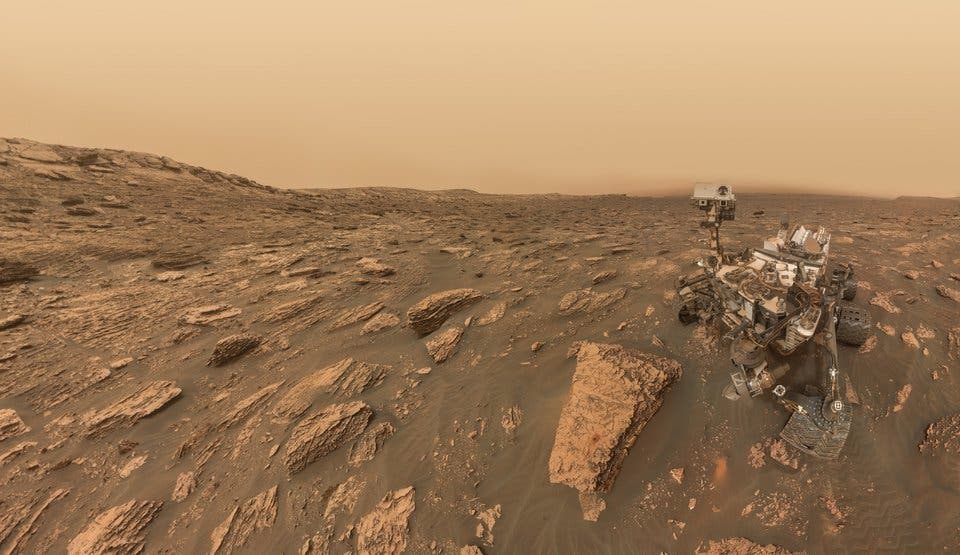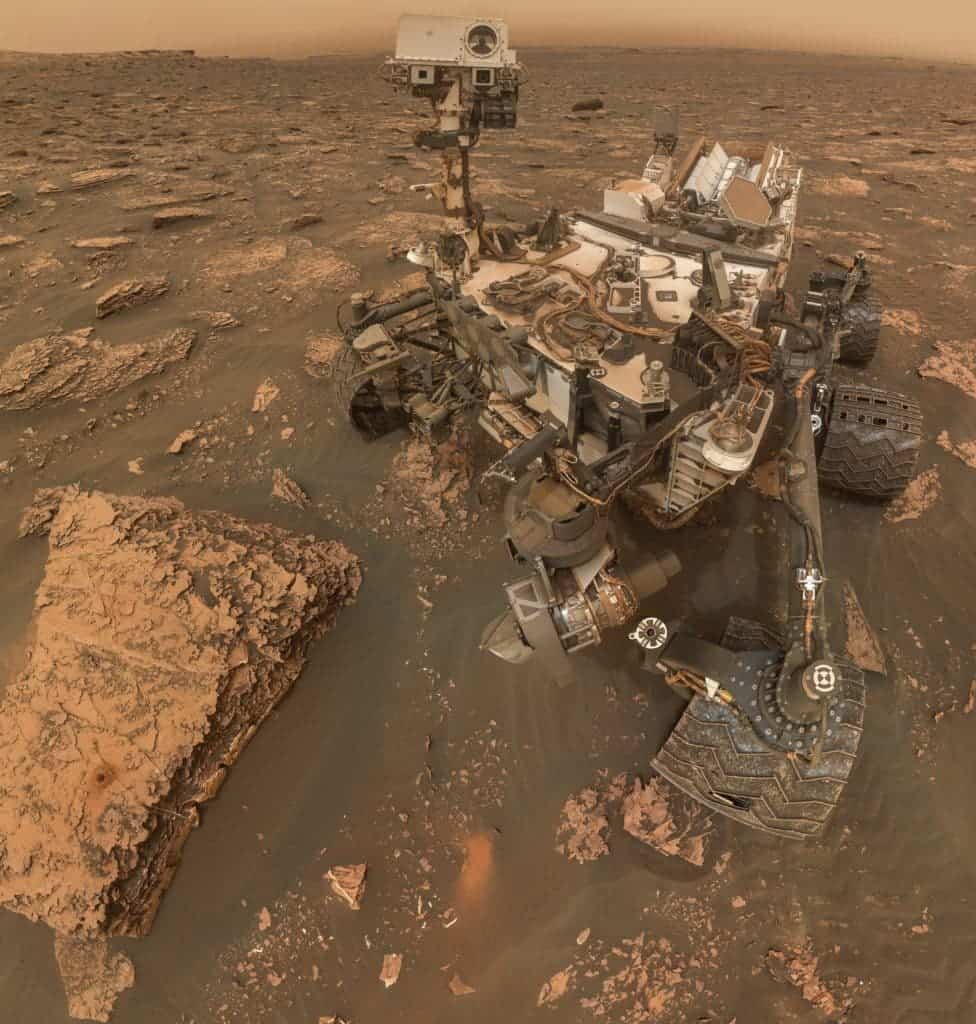While Opportunity is beset by the worst Martian dust storm we’ve ever seen, Curiosity is busy taking selfies.

Last week, we’ve told you about the massive dust storm that’s battering Mars and the hapless Opportunity rover. The solar-powered bot is in danger of freezing to (electronic) death, as its solar panels can’t generate any charge in the night-like conditions inside the dust. The venerable rover (already 15 years old) shut down most activity on June 10 to conserve battery charge.
Meanwhile, on the other side of the Red Planet, NASA’s Curiosity is enjoying a leisurely life complete with the selfies to show for it.
The fortunate son
“The storm is one of the most intense ever observed on the Red Planet,” NASA said in a statement last week. “As of June 10, it covered more than 15.8 million square miles (41 million square kilometers) – about the area of North America and Russia combined.”
“It has blocked out so much sunlight, it has effectively turned day into night for Opportunity, which is located near the center of the storm, inside Mars’ Perseverance Valley.”
In a twist of martian irony, the storm isn’t nearly as intense half a planet away from Opportunity. While the dust storm’s effects can still be felt there, the sunlight is enough for solar panels to generate energy. A twist of irony because Curiosity, which is currently roving about Mars in this area, doesn’t really need the light — it’s powered by a nuclear reactor.
The car-sized rover first landed on Mars in 2012, and, unlike its older cousin, relies on plutonium-238 instead of solar cells for energy. It’s currently camping in the Gale Crater, a 96-mile-wide valley that researchers once believed housed a giant lake.
Also unlike its older cousin, Curiosity seems to be having a whale of a time. NASA recently released some selfies it beamed back Friday, showcasing the rover’s activity on Mars, while Opportunity braves the storm.
The images were taken with an instrument called the Mars Hand Lens Imager. This instrument — probably the most expensive selfie stick humanity ever produced — is a robotic arm that sports a camera. It can’t capture all of Curiosity in one shot, however, so it sent back several — around 200 images. Over the weekend Kevin M. Gill, a NASA software engineer who likes to process spacecraft photos in his spare time, collaged all the images together into a single panorama.
The final image shows Curiosity and its Martian surroundings, including a rock the rover drilled and a smattering of orange dust.

Image modified after NASA/JPL-Caltech/MSSS/Kevin M. Gill, via Kevin M. Gill / Flickr.
Beyond helping us keep tabs on Curiosity’s adventures, the image also showcases its recovery. Back in 2016, its drill instrument was taken offline due to mechanical problems. As the picture shows, however, NASA’s efforts to work around the issue have paid off. The agency first tested the drill in May 2018, when Curiosity bore a two-inch-deep hole in the rock. In a subsequent test, it dropped the drilled dust on the ground, so the agency could get an idea of how much dirt the drill could collect for sampling.
Not everything is rosy for Curiosity, though. The image also shows the damage its aluminum wheels incurred after five years’ time of roving around Mars. It could also probably stand to benefit from a thorough scrubbing.
Curiosity still has some fight left in it, however. Last week, it made headlines around the world by discovering organic molecules, billion-years old, on the Red Planet. In 2013, a rock sample collected by the vehicle revealed that ancient Mars could have supported living microbes. In 2014, the rover measured a tenfold spike in methane, an organic chemical, in the atmosphere around it. At that time, the robotic laboratory also detected other organic molecules in a rock-powder sample collected by its drill.
Was this helpful?



